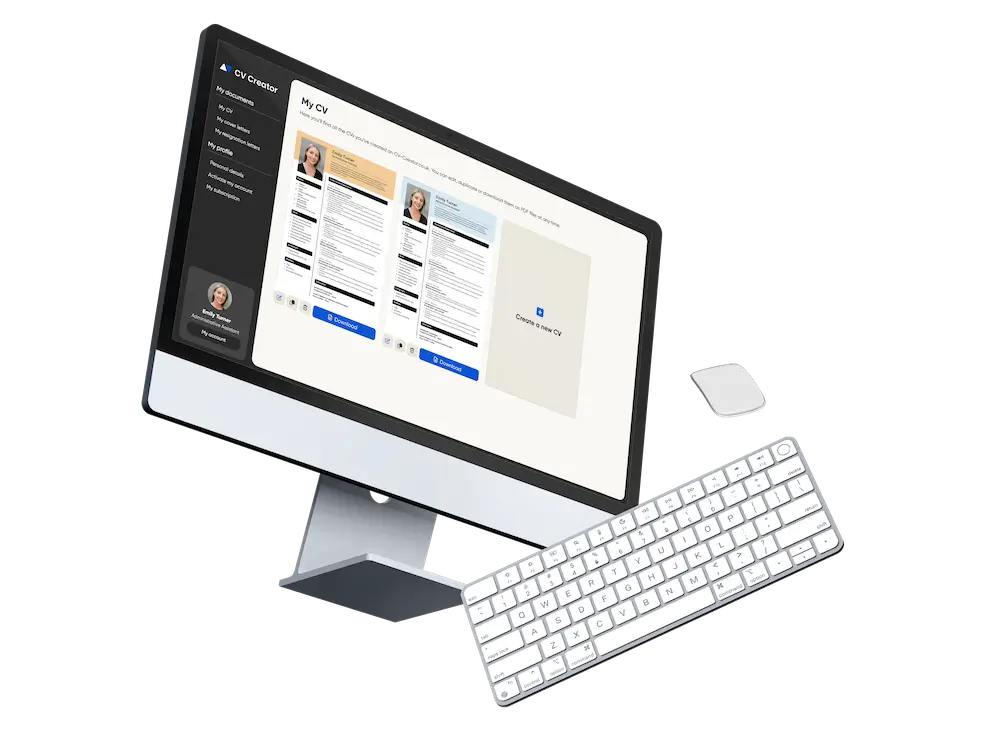CV Creator » CV advice »
Best CV format in the UK
Your CV format is the structure you choose to present your experience: chronological vs skills-based or combination CV
Not what you meant? If you’re looking for fonts, spacing, layout (one vs two columns), or PDF vs Word, see: CV layout and formatting.

Quick decision: choose your CV format in 60 seconds
Chronological CV (reverse-chronological)
Best for: most applicants with a clear work history.
- Most familiar to UK recruiters
- Shows progression fast
- Easy for ATS to read
Skills-based (functional) CV
Best for: career changers, employment gaps, limited experience.
- Leads with transferable skills
- Focuses on projects and outcomes
- Needs clear proof to feel credible
Combination CV
Best for: specialists and senior profiles.
- Skills snapshot + clear work history
- Strong for technical/specialist roles
- Balances expertise and progression
Chronological (reverse-chronological) CV
This is the most common CV format in the UK. It lists your roles from most recent to oldest, making your experience easy to scan. This is the best format for:
- Most candidates with steady experience
- Anyone who wants to show growth or progression
- Applications through job boards / ATS portals
Pros
- Recruiters can understand your story quickly
- Work experience is easy to compare role-by-role
- Usually ATS-friendly when kept simple
Cons
- Employment gaps are more visible (you can still explain them clearly)
- If you’re changing careers, you’ll need stronger “transferable skills” framing
Typical structure (section order)
- Contact details
- Personal profile (3–5 lines)
- Key skills (tailored)
- Work experience (reverse chronological)
- Education
- Optional: certifications / projects / languages / interests
Skills-based (functional) CV
A skills-based CV leads with skills, achievements, and projects instead of putting your work history front and centre. It can work — but only if you back every skill with proof. This is the best format for:
- Career changers (transferable skills)
- Employment gaps or a non-linear work history
- Graduates with strong projects, placements, or volunteering
Pros
- Highlights relevant strengths even if job titles don’t match
- Gives you control over the story you lead with
- Works well when your projects are stronger than your job history
Cons
- Risk: can feel vague if it’s just a list of skills → Fix: add proof (results, tools, examples)
- Risk: some recruiters prefer seeing a clear timeline → Fix: include a short, clear employment history section
Structure (skills first, but still clear)
- Contact details
- Personal profile (aligned to the target role)
- Key skills and achievements (grouped by theme)
- Projects / relevant experience (e.g., portfolio projects, volunteering)
- Employment history (short, clear timeline)
- Education
Combination CV
A combination CV starts with a focused skills snapshot, then follows with a reverse-chronological work history. It’s often the best compromise when you want to highlight expertise without hiding your timeline. This is the best format for:
- Specialists (IT, engineering, finance, healthcare, etc.)
- Senior candidates with strong achievements
- Career changers who still have relevant experience to show
Pros
- You can lead with your strongest selling points
- Still shows a clear career timeline
- Great for “targeted” applications where keywords matter
Cons
- If overdone, it can feel repetitive (skills listed twice)
- Needs tight formatting to stay within 1–2 pages
Structure (recommended)
- Contact details
- Personal profile
- Key skills (short, targeted)
- Selected achievements (optional: 3–5 proof points)
- Work experience (reverse chronological)
- Education
- Optional sections (certs, languages, projects)
Section order by profile (UK)
Once you’ve chosen a format, the next decision is what comes first. Put your strongest, most relevant section higher.
Students and graduates
- Education often goes above work experience
- Add projects, placements, achievements, and transferable skills
- Keep work experience (even part-time) if it shows responsibility/results
For more tips tailored to students, see our guide to student CVs.
Experienced professionals
- Work experience should lead (after profile + skills)
- Education can be shorter (degree + university + year is often enough)
- Add certifications if they’re valuable in your sector
See our work experience CV guide for more tips.
Career changers or gaps
- Lead with skills + proof (projects, outcomes, relevant training)
- Keep employment history clear and honest (short timeline section)
- Use your profile to connect the dots to the target role
Read our guide to handling gaps in your CV.
Common mistakes when choosing a CV format
- Picking a skills-based CV with no proof: skills without examples look like buzzwords.
- Trying to “hide” gaps instead of explaining them clearly: clarity builds trust.
- Mixing formats: decide what leads (skills or timeline) and keep it consistent.
- Ignoring the job advert: your format should make relevant keywords and evidence easy to find.
- Overloading the top: keep your profile + skills tight so experience still gets seen.
Key takeaways: choose the right CV format
Not sure which format to use? These quick points help you pick the best structure for your profile — and know when to switch.
- Chronological (reverse-chronological) is the safest choice for most UK applications: clear timeline, easy to scan.
- Skills-based works best for career changers, gaps, or limited experience — but only if every skill comes with proof.
- Combination is ideal for specialists: lead with key skills, then back them up with a strong work history.
- Your section order should match your profile: graduates can lead with education; experienced candidates should lead with experience.
- Don’t switch formats for every job — keep the same structure and tailor your profile, skills and evidence to each role.
- Format = structure. For fonts, spacing, layout (one vs two columns) and PDF vs Word, use the CV layout guide.
FAQ about CV formats
What is the best CV format in the UK?
Is a skills-based (functional) CV ATS-friendly?
When should I use a combination CV?
Should I change my CV format for every application?
Where can I find help with fonts, spacing, layout, and PDF vs Word?

Ready to write your CV?
Now that you’ve chosen the right format, follow our step-by-step guide to fill in each section with strong, recruiter-friendly content.
